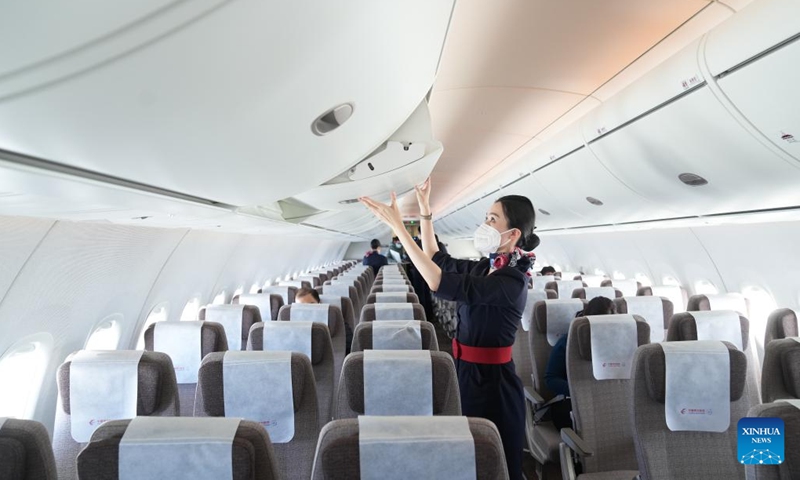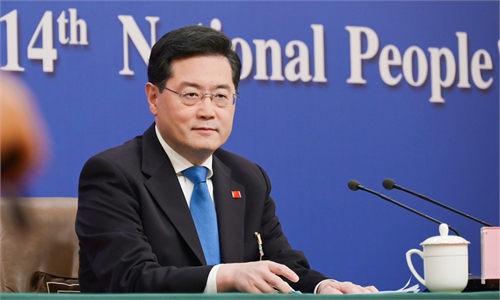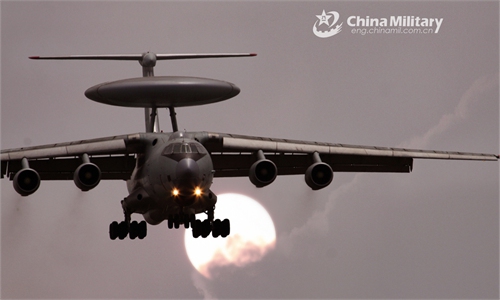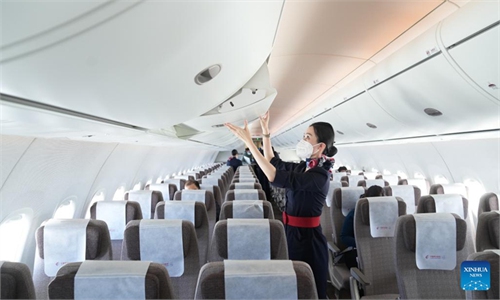China’s air transportation volume expected to more than double by 2035: China Eastern general manager

A flight attendant of China Eastern Airlines works in the cabin of a C919 large passenger aircraft, China's first homegrown large jetliner, during a validation flight from Hongqiao International Airport in east China's Shanghai to Capital International Airport in China's capital Beijing, Jan. 9, 2023. The world's first C919 aircraft began its 100-hour aircraft validation flight process on Dec. 26, 2022 after it was delivered to China Eastern Airlines on Dec. 9, 2022.(Photo: Xinhua)
China's air transportation volume will more than double by 2035 due to the rapid recovery of the civil aviation industry, said Li Yangmin, a member of the 14th National Committee of the Chinese People's Political Consultative Conference and the general manager of the China Eastern Airlines.
Li said that this growth will amplify pressures on basic infrastructure, resources, and environmental constraints.Li emphasized the importance of accelerating the construction of smart aviation, which he believes is a necessary step for China to transform from a "big aviation country" to a "strong aviation power."
Li suggested that China's transportation system, led by relevant authorities, to explore a safe and regulated way of data transboundary flow, as the country has not yet established a sharing and communication mechanism for data and elements.
Such sharing would facilitate providing multimodal transportation services, including one-stop ticket purchase, mutual recognition of security results, quick transfer and luggage check-through, and would lead to new progress in the development of smart aviation, he said.
Li also urges the civil aviation sector to strengthen its technological innovation ability and improve self-sufficiency.
Some of the aviation core systems, such as operation and control, aircraft maintenance, airline and network, and ground support, rely on imports, and investment in their research and development is costly, time-consuming, and technically demanding. Li suggested that relevant parties should coordinate under the leadership of industry authorities, rather than working alone, to make breakthroughs in these bottleneck issues.
According to Li, the building of China's smart aviation has achieved remarkable results over the past decade. The on-time flight rate has exceeded 80 percent for five years in a row, and 251 airports in China have implemented paperless and convenient travel for domestic flights.
In January, China's aviation industry sent a total of 39.78 million passengers, up 34.8 percent year-on-year, data from the Civil Aviation Administration of China showed.



